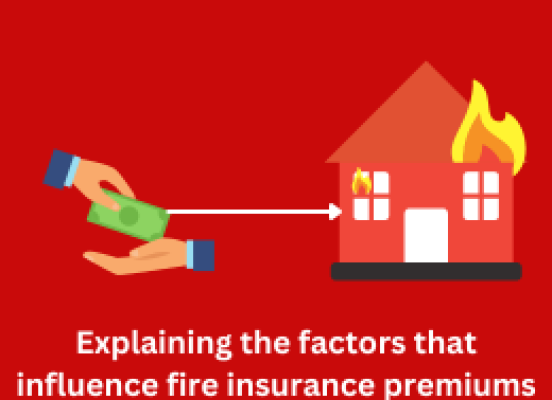

Fire insurance plays a critical role in protecting property owners against financial losses caused by fire-related incidents. Insurance companies assess various factors to determine fire insurance premiums, ensuring that policyholders are adequately covered while considering the risks associated with the property. This article explores the key factors that influence fire insurance premiums and provides insights into their significance.
Property Value: The value of the insured property is a crucial factor in determining fire insurance premiums. Insurance companies consider factors such as the property's construction cost, market value, and replacement cost. Higher property values generally lead to higher premiums as the potential loss for the insurer in the event of a fire is greater.
Property Type and Usage: Different types of properties pose varying levels of risk for fire incidents. Commercial properties, such as factories or warehouses, may involve higher fire hazards due to the presence of flammable materials or complex machinery. Residential properties are typically categorized based on construction type, such as single-family homes, apartments, or condominiums. Insurance companies assess these classifications and charge premiums accordingly, considering the potential fire risks associated with each property type.
Location: The geographical location of the insured property significantly affects fire insurance premiums. Insurance companies evaluate the proximity of fire stations, hydrants, and other emergency services. Properties located in urban areas with better fire protection infrastructure generally have lower premiums compared to those in remote or high-risk areas, such as areas prone to wildfires.
Fire Protection Systems: The presence and quality of fire protection systems within the property significantly impact insurance premiums. Properties equipped with fire alarms, sprinkler systems, fire extinguishers, and smoke detectors reduce the risk of severe fire damage. Insurance companies offer premium discounts for properties with these safety measures in place, as they minimize the potential loss.
Construction Materials: The materials used in the construction of a property influence its susceptibility to fire. Insurance companies consider the type of construction materials, such as wood, brick, concrete, or steel, when assessing fire insurance premiums. Properties built with fire-resistant materials generally attract lower premiums due to their reduced fire risk.
Fire Loss History: The previous fire loss history of a property or its surrounding area is a crucial factor in determining fire insurance premiums. If a property has experienced fire incidents in the past, it may be considered a higher risk, resulting in higher premiums. Additionally, properties located in areas with a history of wildfires, for example, may face increased premiums due to the elevated risk of future fires.
Occupancy and Usage: The activities conducted within a property affect its fire risk. Insurance companies assess the occupancy and usage of a property, considering factors such as residential, commercial, industrial, or vacant. Commercial or industrial properties may have higher fire risks due to the presence of hazardous materials, electrical systems, or specific industrial processes. Consequently, the nature of occupancy and usage plays a significant role in determining fire insurance premiums.
Fire Department Accessibility: The proximity and accessibility of the nearest fire department to the insured property is a critical factor. Insurance companies consider the response time and availability of firefighting services in case of a fire emergency. Properties located in areas with quick access to fire departments tend to have lower premiums as the response time can significantly impact the extent of fire damage.
Deductible Amount: The deductible is the portion of the loss that the policyholder must bear before the insurance coverage takes effect. Choosing a higher deductible can lower fire insurance premiums, as it reduces the insurer's potential liability. However, policyholders should carefully consider their financial capabilities to cover the deductible amount in the event of a fire-related claim.
Determining fire insurance premiums involves a thorough evaluation of various factors. Property value, type and usage, location, fire protection systems, construction materials, fire loss history, occupancy, fire department accessibility, and deductible amount all contribute to the calculation of premiums. Policyholders should be aware of these factors and take appropriate measures to mitigate fire risks, such as implementing safety systems and adhering to fire prevention guidelines, which can result in lower premiums while ensuring comprehensive coverage for their properties.